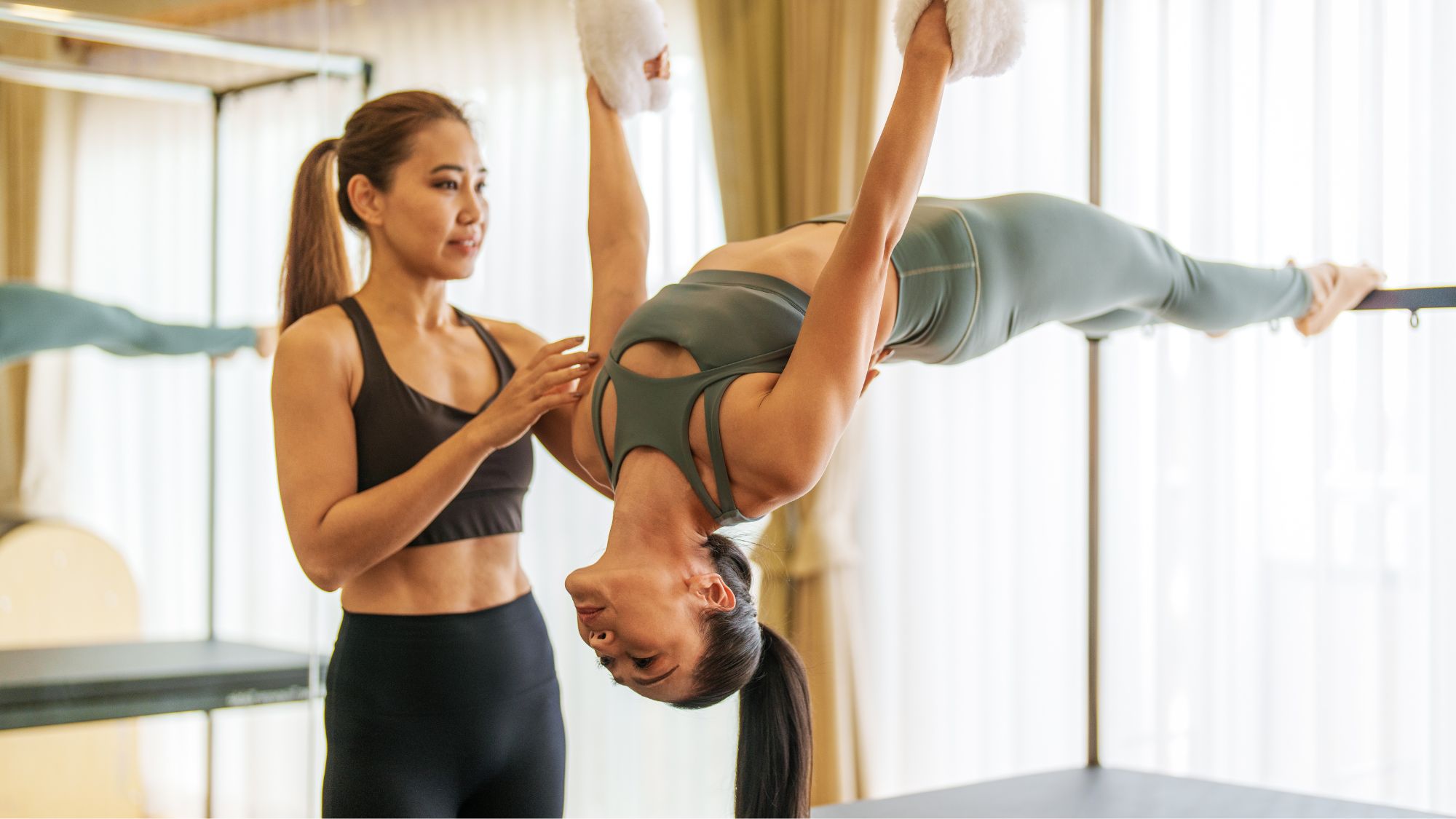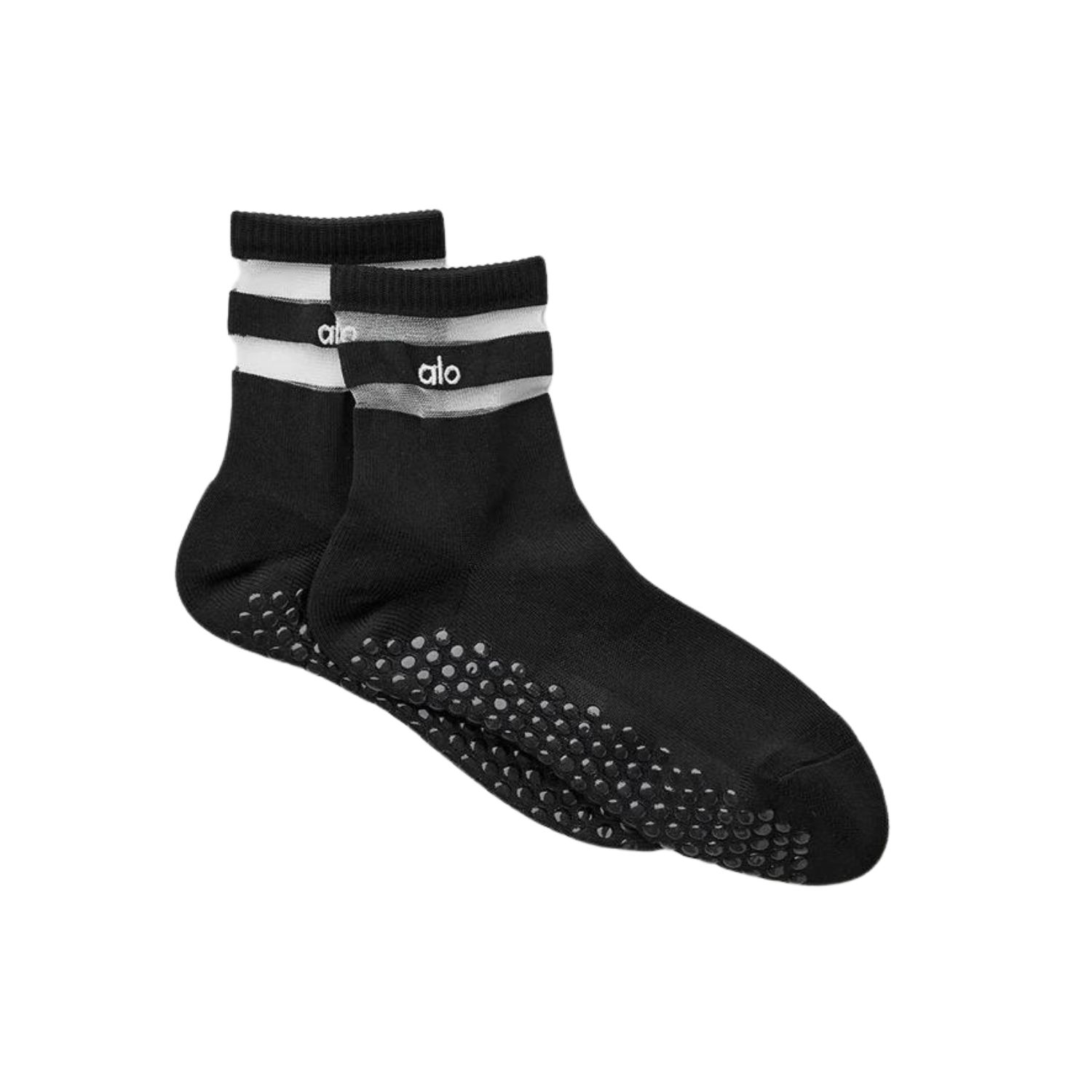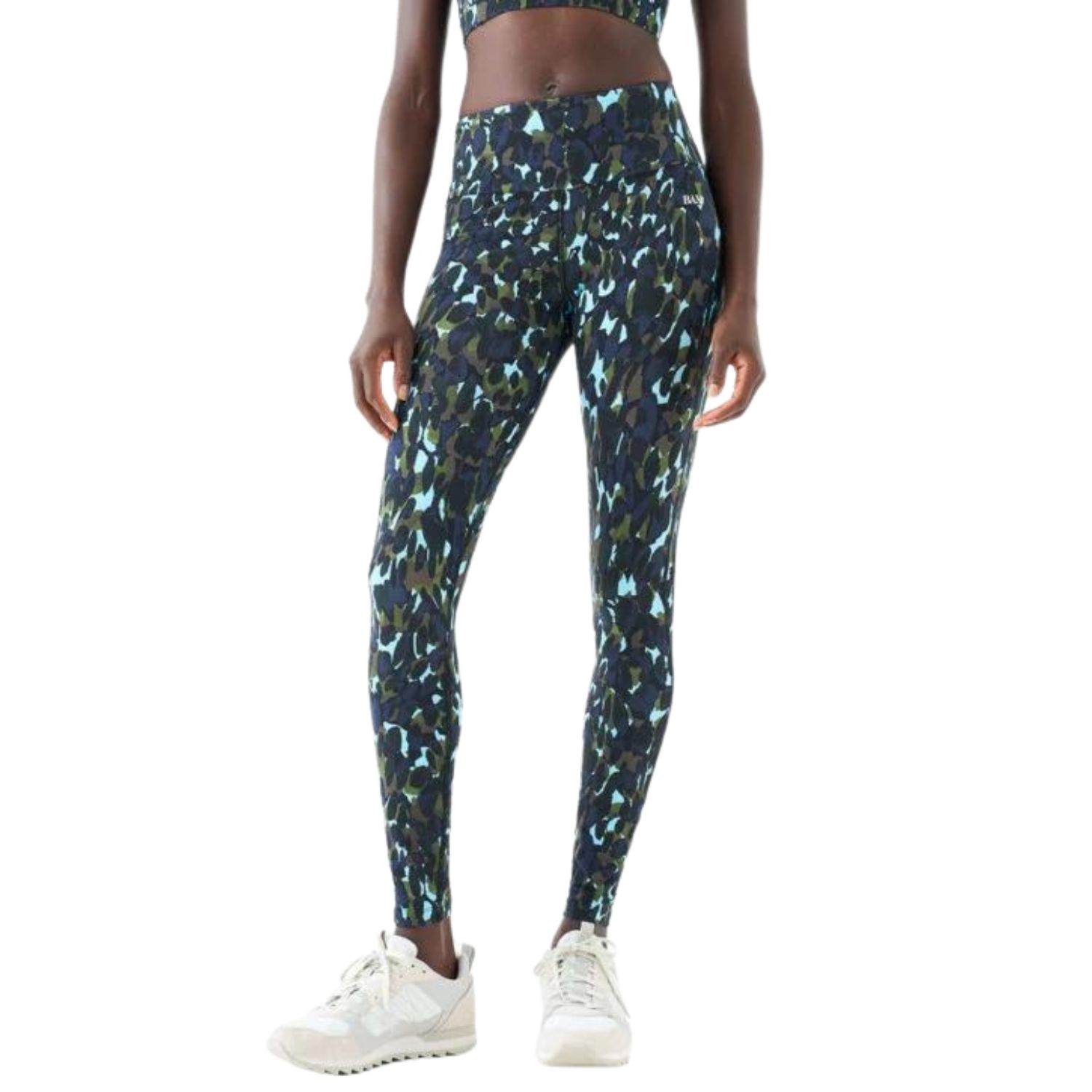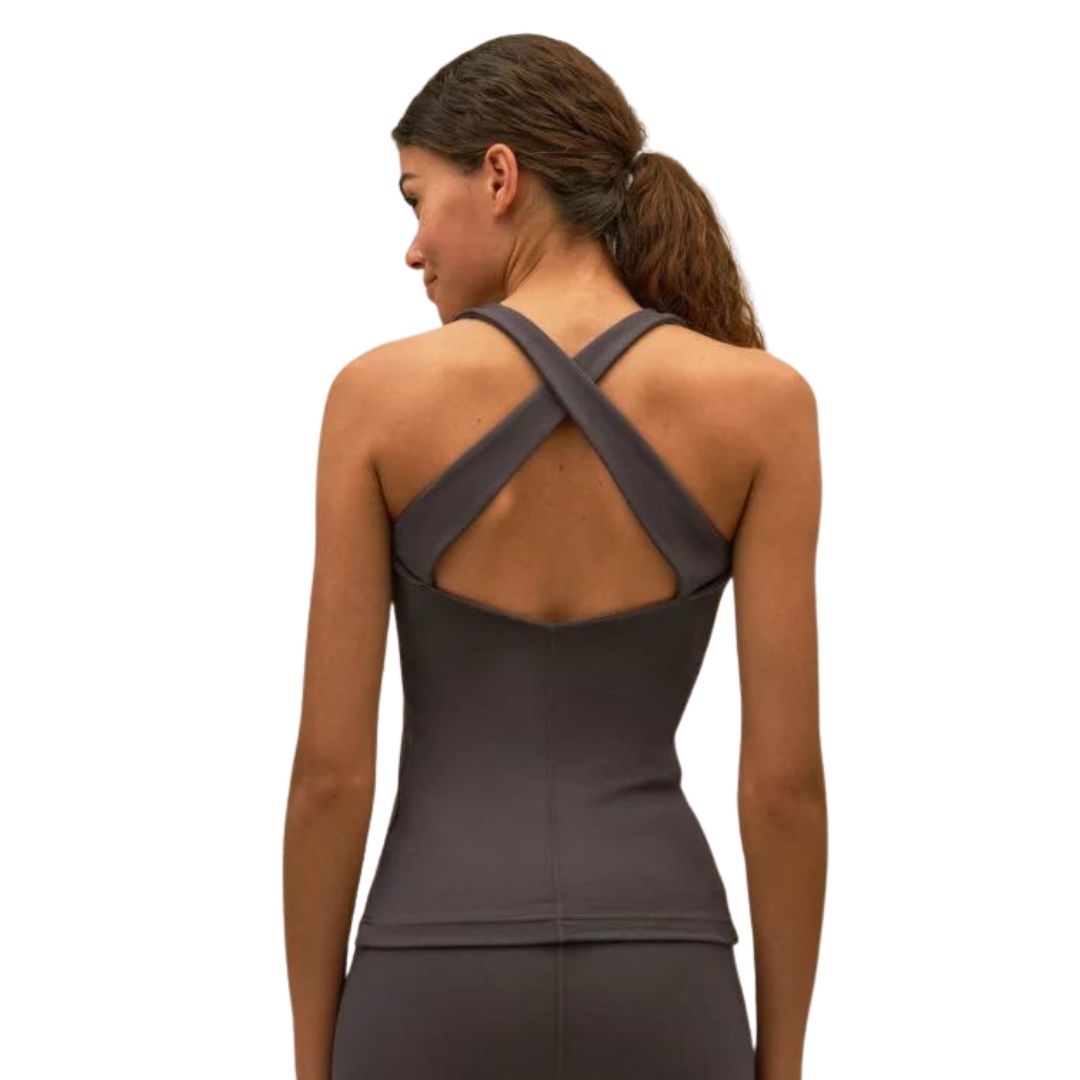It's without doubt the most popular workout of the year - so, is Reformer Pilates a form of strength training?
Two Pilates pros hash it out.


If you want to build muscle and do so in a low-impact way, you might be questioning: is Reformer Pilates strength training or are weights the only way to carve out a stronger body?
Well, for those new to this type of mind-body exercise, reformer Pilates — the viral workout that promises to better posture, strengthen your core and work muscles you perhaps didn't even know you had — is the art of practising Pilates on a 'reformer' machine, which uses your body weight and spring resistance. Between the forever trending snaps of the workout spotted on social media and the current stats suggesting that there are more than 4,702 Pilates and yoga studios in the UK, you could say that the much-loved exercise is going nowhere fast.
One reason given for this? “In my eyes, it works the body in a way no other form of exercise can,” Claire Mills, physiotherapist and founder of Pilates studios, Core LDN tells us. “The reformer works using body weight and spring resistance, meaning that you work on neuromuscular connectivity and control alongside all the other benefits such as muscle strength, endurance, flexibility, and posture,” Mills adds. “It also targets your deep postural muscle system and core alongside your bigger global muscle system, improving the control of this deeper system alongside global strengthening is key for optimising performance, posture and preventing injury.”
So in other words: reformer Pilates is pretty great. But is slinging around weights the only way to become stronger? Or can reformer Pilates help you strength train too?
To debunk this topic, we asked two Pilates experts if reformer Pilates is a form of strength training and if so, how it works. Plus, while you’re here, you might also be interested in understanding the differences between Reformer Pilates vs mat Pilates, whether practising Pilates once a week is enough to reap the rewards and if mat Pilates is better than weight training to help boost muscle and tone.
Is Reformer Pilates strength training? Your expert-backed guide
What is Reformer Pilates?
Let's break it down. Reformer Pilates refers to the practice of performing Pilates — you know, the series of exercises performed repetitively to better balance, build strength and flexibility in the body — on a ‘reformer’ machine.
At first glance, a reformer Pilates machine might look like a very technical, intimidating and somewhat confusing piece of kit. But don’t be deterred!
Marie Claire Newsletter
Celebrity news, beauty, fashion advice, and fascinating features, delivered straight to your inbox!
If you attend a reformer Pilates class or plan on doing so, you’ll essentially be perfecting all the same moves you complete on a mat, just on a moving carriage where you use your body weight and spring resistance.
@gojkovicc ♬ Say So (Instrumental Version) [Originally Performed by Doja Cat] - Elliot Van Coup
Tell me, what are the benefits of Reformer Pilates?
Unlike many other fads and fitness trends sweeping TikTok, reformer Pilates comes with a shedload of science-backed benefits.
Researchers have proven that Reformer Pilates — like its mat-based counterpart — has the pretty impressive power to increase muscle strength, endurance, flexibility, posture and balance. It also places a strong emphasis on core strength. “Strengthening the core not only improves posture and stability but also supports overall physical health and performance,” Pilates pro Jade Winter, co-founder of Studio Pilates International adds.
While, as one research paper shows, just 12 weeks of equipment-based Pilates (and/or mat-based Pilates) can help those with chronic low back pain activate their transversus abdominal — which, according to researchers, has been deemed to play an important role in the improvement of this condition.
But the benefits don’t stop there. “As a physiotherapist Reformer Pilates is my go-to for rehabbing any injury," Mills says. "It is also a real mind-body exercise using breath and focusing on slow controlled movements making it a mindful form of exercise great for mental wellbeing.”
But, according to Winter, one of the most underrated benefits is Reformer Pilates versatility in intensity. “You can work out at a super low intensity or ramp it up to a super high intensity, all on one machine and without impact,” he explains. “This makes reformer Pilates accessible to everyone, regardless of fitness level and everyone can get something from it.”
It can also work the entire body in all different planes of motion and ranges of motion, Winter says. Which in layman’s terms means? “This comprehensive approach ensures that you are targeting multiple muscle groups and enhancing overall strength, muscle endurance and flexibility in ways not possible with many other forms of resistance training,” he adds.
Is Reformer a type of strength training?
Now, the question we've all been waiting for. According to physio and Pilates guru Mills, yes, Reformer Pilates is a type of strength training. “Reformer targets our deeper postural muscle system which works at a lower load, with slower twitch endurance muscle fibres," she says. "It is perfect for strengthening this muscle system, plus reformer Pilates also integrates global muscle strengthening through the spring resistance, and by adding in additional weights and working to the correct reps and sets.”
And Winter agrees, adding that he’d place reformer Pilates in the ‘muscle endurance training’ category. “Strength training typically refers to the amount of force you can put out or the amount of weight you can lift, whereas muscle endurance training focuses on how many times you can move that weight before getting exhausted,” he tells us.
“Pilates fits perfectly into the muscle endurance training category, and I believe that's one of the key reasons it's so effective and popular with athletes and those who appreciate functional fitness.”
@ashtonvonkessler ♬ Birds of a feather - 𝖒𝖊𝖌𝖆 𝖊𝖆𝖗𝖙𝖍𝖑𝖎𝖓𝖌
“You can get your workout done efficiently, which helps to keep you consistent”
Jessica Gormley, 37 , is the owner of Embody Reformer Pilates in Ireland and a Pilates instructor and educator. Gormley has been practising reformer Pilates for more than 12 years and noticed a difference both mentally and physically in four weeks. She now swears by reformer to help her build strength. Here she explains why…
"I took my first reformer class in 2012. Having never really been an avid exerciser, I wanted to start to incorporate some sort of fitness practice into my life. I always found gyms intimidating and never really knew what I was doing, which would inevitably lead me to giving up. I had heard some friends talking about it so decided to give it a try.
"I love how varied reformer Pilates is. I simply never get bored. Whether your focus that day is mobility or strength, or a mix, you can do it all on the reformer. And I also love how strong it makes me feel, without feeling depleted.
"I aim to get at least 4 x 45 mins sessions in a week. This can be a combination of classes and self practice depending on how my schedule is looking.
"I'm lucky as I own a studio, so I have access to both classes and a reformer for self practice. I aim to do a mix of both. Classes, while always ensuring a full body work out and incorporating push and pull exercises, will usually have a specific focus. I'll then structure my self-practice around this. If the class was upper body focused, I'll make sure I do a lower body session myself.
"The reformer is a fantastic piece of equipment that can be used in a variety of ways. You can change the resistance easily and you can incorporate other equipment such as dumbells or kettlebells to add more load. But unlike the gym, you don't have to chop and change machines or wait for someone to finish their set. It means you can get your workout done efficiently, which helps to keep you consistent.
"As I pretty much had zero fitness when I first started, I noticed results fairly quickly in the first four weeks, both mentally and physically. I could lift heavier items in work with ease and I felt more energised. The more physical results came about maybe 12 weeks in. I looked leaner, more toned and had definition in my arms. Now I see my strength training as a tool to keeping my body healthy and living an active life. For now and for the future."
So, for anyone thinking about giving reformer a go? "Give it a shot," Gormley says. "Whether you're a newbie or a gym goer, the joy of the reformer is it can be adapted to everyone. Also you will learn the principles of pilates and increased body awareness, which will have an amazing benefit on your life outside the studio. Be that in the gym, playing sport or just everyday life."
Shop MC UK's go-to Pilates workout kit now:

Trainers aren’t needed for your reformer Pilates class but grip socks are! Grip socks come with small rubberised grips on the bottom that help to keep the carriage clean and provide traction. These options from Alo are *chefs kiss*.

Soft, supportive and so, so beautiful — these full-length leggings are kitted out with sustainable fabrics, a deep waistband and a hidden back pocket for keys. What more could your reformer Pilates sesh need?

Coming with a crossover racerback design, a beautiful bold print and crafted from soft sustainable fabrics, who knew a sports bra could look good and do good?
Can you build muscle with a Pilates reformer?
Reformer Pilates can be an effective way to build muscle, so experts say. However, building muscle does come with a few conditions. “You can build muscle with a Pilates reformer if you approach it in the same way that you'd take with any other form of resistance training,” Jade Winter co-founder of Studio Pilates Internationalsays. “To build muscle, you need to have an adequately high level of resistance (so weights in the gym, heavy-duty springs in reformer Pilates) and you need to repeatedly move that resistance until you can’t move it anymore,” the expert explains.
If you want to keep growing muscle, you’ll want to implement the art of progressive overload, which can be performed by adding higher repetitions, decreasing rest time, increasing time under tension and/or training to failure.
“If it ain’t challenging, you ain’t changing,” Winter says. “By progressively loading and overloading your muscles with increased resistance, your muscles adapt and grow stronger, larger and increase in tone,” the Pilates pro tells us.
But as is the case with any type of exercise — from low-impact strength training to HIIT workouts — practising with good form is a necessity.
“There’s no point doing any form of exercise, Pilates included, if you end up in the chiropractor’s office or your local physical therapist afterwards,” Winter says. “With the right approach to your Pilates training, you will not only build muscle but also feel better than you have ever before.”

Rebecca, or Becks, is a freelance journalist with more than ten years of experience in the industry. She specialises in all things health and lifestyle and has written for a number of brands including Women's Health, Stylist, the Evening Standard, Good Housekeeping, The Telegraph, Live Science, Tom's Guide and Fit&Well. Becks also writes copy for a number of brands and small businesses.
When she's not weight training, tracking down the best gym leggings, reading a book or at her desk typing away, you'll find her in the kitchen perfecting a new recipe or bake.
-
 Style Briefing: Matthieu Blazy's last hurrah at Bottega Veneta
Style Briefing: Matthieu Blazy's last hurrah at Bottega VenetaHow the designer delivered a fresh perspective while also honouring its history of craft and creativity
By Rebecca Jane Hill
-
 The Emily in Paris cast has spoken out as one of its stars officially quits the show
The Emily in Paris cast has spoken out as one of its stars officially quits the showBy Jenny Proudfoot
-
 Timothée Chalamet’s mother has opened up about his relationship with Kylie Jenner
Timothée Chalamet’s mother has opened up about his relationship with Kylie JennerBy Jenny Proudfoot